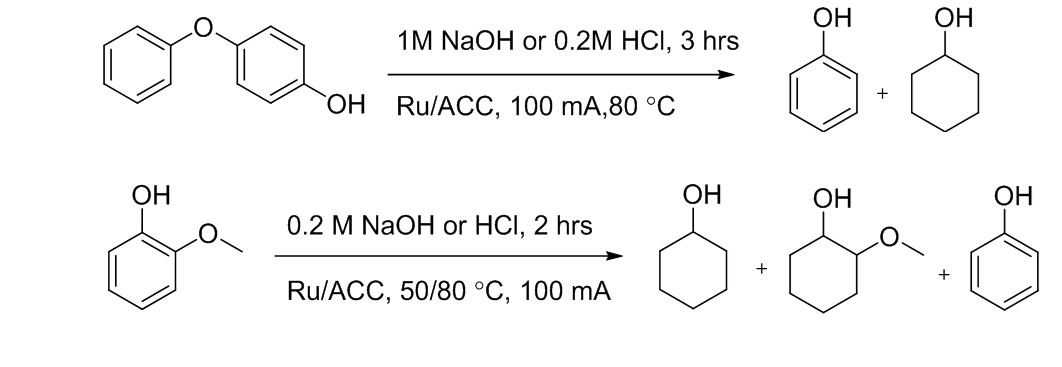Project Members
Yuting Zhou
Lignin Dimer Synthesis and Model Study

Project Overview
As the growing need for renewable energy, biomass is attracted as the only source of fixed carbon energy. Among technologies converting biomass to fuels, fast pyrolysis, which offers the benefits of directly converting biomass to liquid fuels, becoming promising as the most carbon-atom economic pretreatment. However, the liquid bio-oil produced by fast pyrolysis cannot be used as fuels directly, because of its high-reactivity, high-viscosity, high moisture content and poor energy density. Traditional upgrading of bio-oil requires high energy-cost condition, which can be replaced by Electocatalytic hydrogenation (ECH), a mild and efficient approach. Lignin is the second largest component in biomass, and its amorphous cross-linked structure renders it extremely difficult to be cleaved into small monomer units during pyrolysis, thus except for monomers, dimers, trimers, and oligomers existing generally in bio-oil and contribute to the unfavorable characteristics of crude biooil. ECH can upgrade the bio-oil produced by pyrolysis of lignin by cleaving the linkages between lignin monounits, thus lowering down the viscosity, stabilizing bio-oil, and increase the energy density of bio-oil. More specifically, model molecules of lignin dimer with β-5, 5-5, β-β linkages, which are three linkages resistant to pyrolysis and existing in large quantity in pyrolysis lignin oil, have never been investigated by ECH. We synthesized the three lignin dimers and studied them by ECH with Raney nickel catalyst and Ruthenium catalyst in water solution to explore the optimal conditions for upgrading lignin bio-oil. Nevertheless, dimers may not represent the properties of the lignin part in bio-oil, oligomer models are needed in future investigations, accordingly, we proposed a synthesis route for lignin oligomer model based on the coupling of different dimers, which can be utilized in the synthesis of different oligomers.
Related Literature
Coming Soon